Last Updated on September 5, 2023 by Grant
It was shortly after lunch when we pulled off the pavement on to one of the dirt roads in Big Bend National Park. While the temperature was a balmy 71, we knew we did not want to arrive at our campsite too early and spend too much time out in the sun.
Immediately, we are confronted with a warning sign telling us River Road requires a four-wheel drive vehicle. Check.
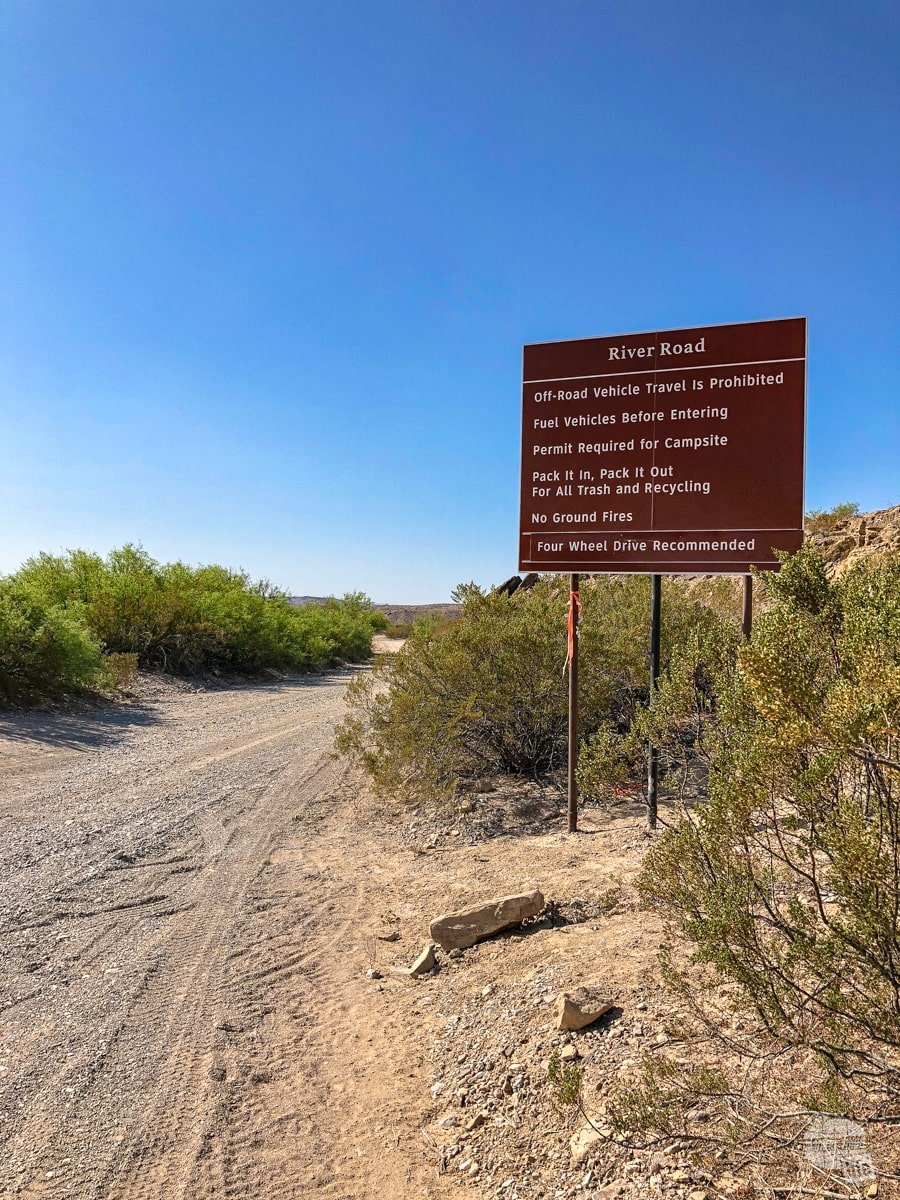
The difference in this road from the others we had driven thus far was immediately apparent. It was rockier, less improved. There was no rushing this drive but, honestly, I wouldn’t want to. It felt as if every turn led to something new and unseen.
By the time we got to our campsite, we saw stunning views of both the Chisos Mountains and the Rio Grande. We experienced a remoteness we seldom find. Most importantly, we enjoyed the challenges of one of Big Bend’s primitive dirt roads.
(Disclaimer: When we link to places where you can buy our stuff or places we stayed, we are using special codes that earn us commissions on the sales at no additional cost to you. Please see our Review Policy for more information.)
Safety
First and foremost, make sure anytime you go into the backcountry of a park you come prepared. You should have food and water for at least two days with you. Travel with at least a spare tire; having a tire patch kit is a good idea too. Check all of your fluid levels before you embark. You should also let someone know you are traveling in the backcountry and when to expect you to come out.
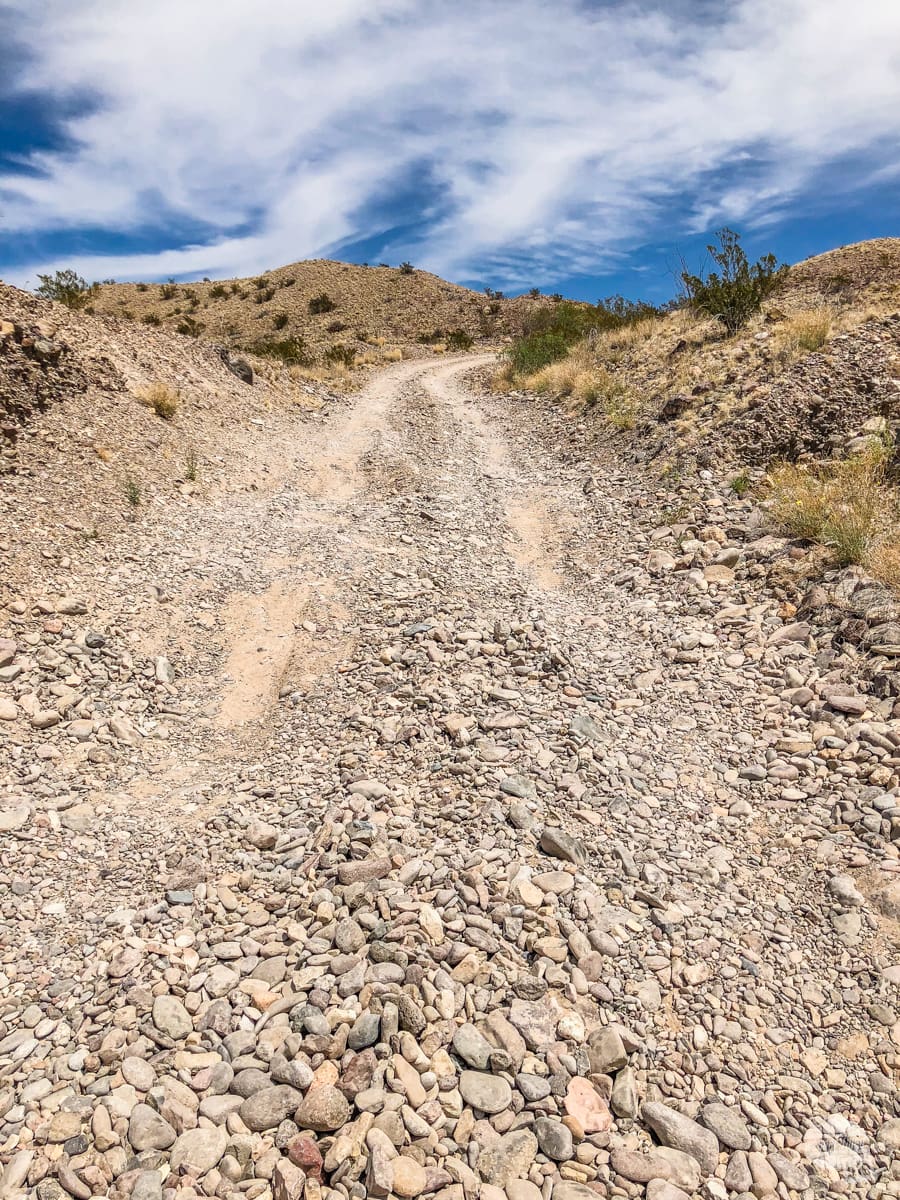
There is little to no cell phone coverage, so you really are on your own if you get stuck. Be sure to check out the Park Service’s guide on the dirt roads. We did run into a pair of park volunteers who were patrolling River Road for stranded vehicles, but they were headed out for the day by around 3 p.m.
We made a point to buy the guide to the dirt roads available at the visitor center bookstore. This book has a mile by mile guide to each of the roads and for less than $5, was more than worth it.
What Kind of Vehicle Do You Need?
The Park Service breaks these roads down into two categories: improved dirt roads and primitive dirt roads. We drove all of the improved dirt roads and two of the primitive dirt roads in our visit to Big Bend NP.
For the improved dirt roads, you do not need a four-wheel drive, though having high clearance would be good. We saw cars and very basic SUVs on most of the improved dirt roads. Just take it slow and you will be fine.
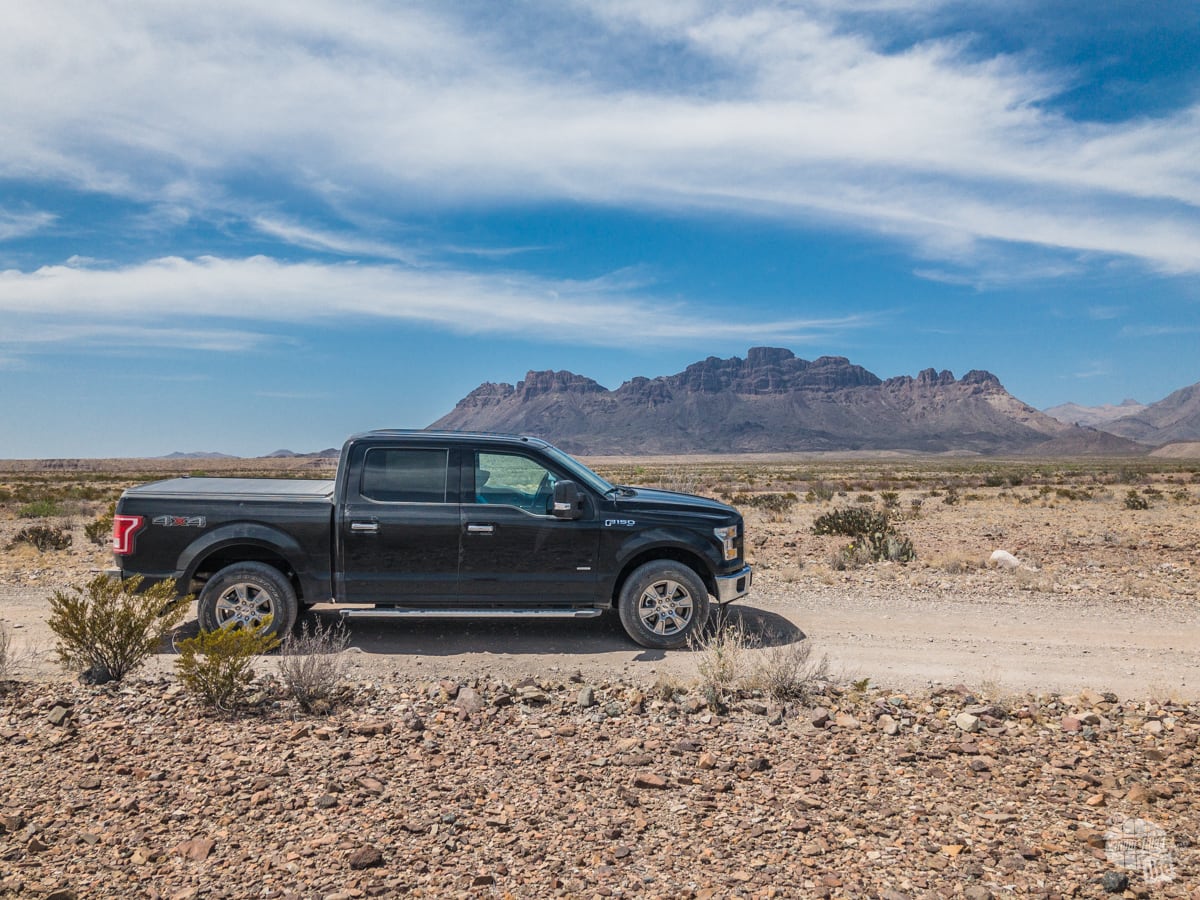
For most of the primitive roads, you must have a high-clearance vehicle. My F-150 has 9.4 inches of ground clearance and there were a couple of spots where I could feel a little rubbing. There were a couple of other spots where I had Bonnie get out to spot me climbing over rocks.
A Note on Four-Wheel Drive
Four-wheel drive is nice to have, but not necessary if you drive carefully. There are some sections of River Road in particular where I was glad to four-wheel drive but did not feel I HAD to have it. That said, it was very dry when we were there. If it had rained at all, I would have needed four-wheel drive to traverse River Road and likely Glen Springs Road as well.
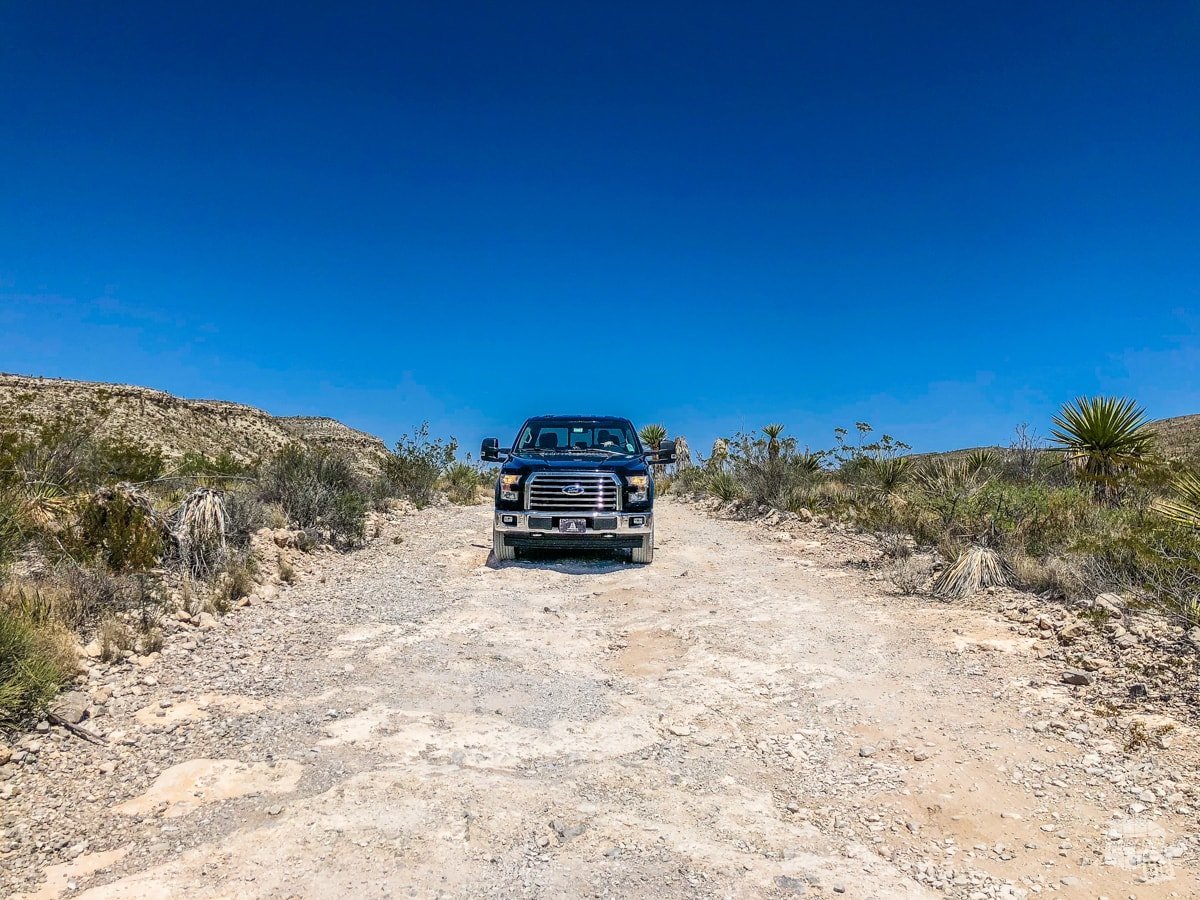
In general, a four-wheel drive is great to have on a vehicle. It is a good tool for getting you out of tight spots, but I am a firm believer you should only rarely use it when traveling off paved roads and then only in four-wheel-drive high.
Unless you have a winch and tools, four-wheel-drive low, in particular, is best left for only when you need it. If you are using it all the time, when you get stuck, you don’t have anything “extra” to get you out.
Improved Dirt Roads
Dagger Flat Auto Trail
The Dagger Flat Auto Trail is an improved dirt road just after you enter the park from the north. The road is relatively flat and well-graded, except for a couple of rough patches. Most any vehicle should be able to drive this road without difficulty, but be sure to ask the park ranger for current conditions of the road. Remember, all it takes is one good rain and it can wash out an entire section of the road.
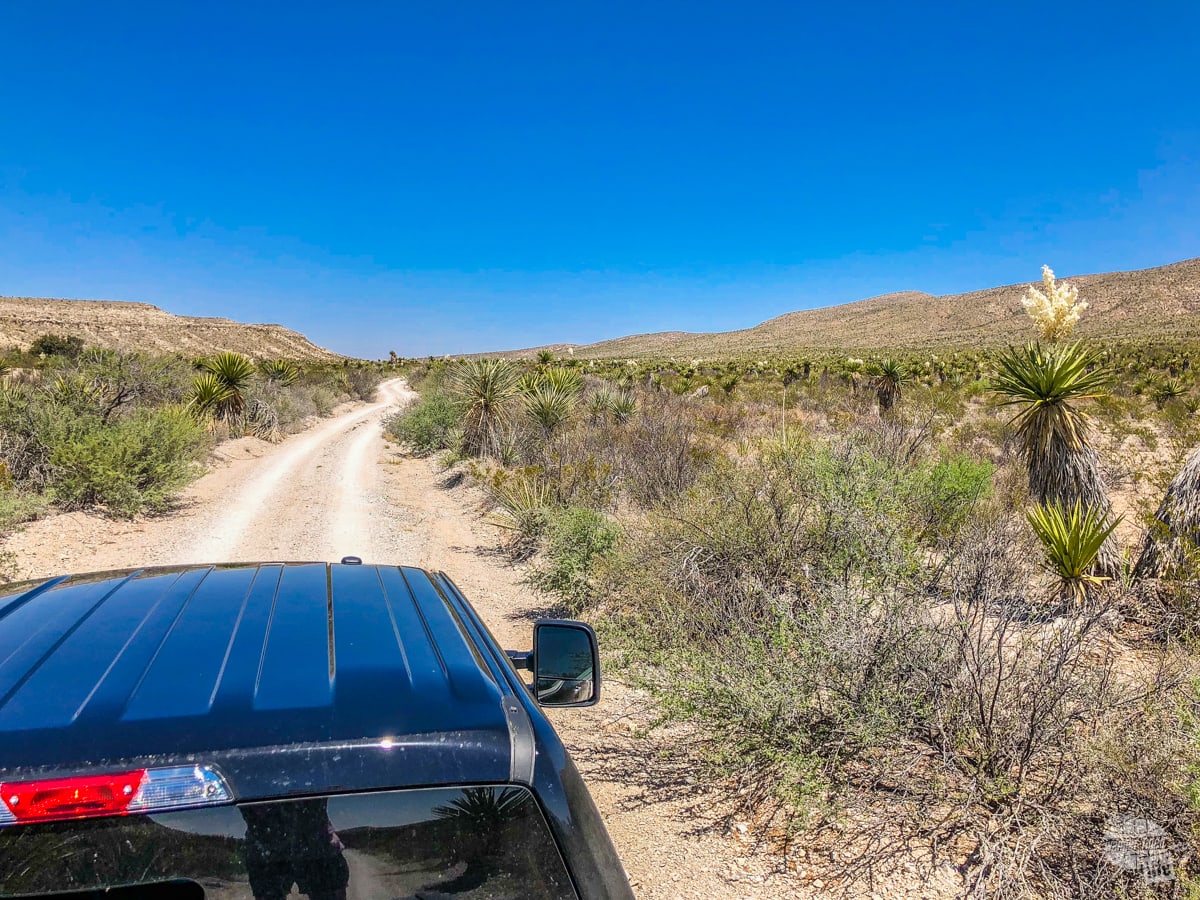
We loved this drive, though. Driving it in the spring provided a lot of great views of flowering desert plants plus a taste of getting some dirt on the tires. This road is worth the time for anyone visiting the park.
Grapevine Hills Road
This road is relatively short with a few spots which would require concentration on a low-clearance vehicle, but it provides access to one of my favorite hikes in the park, the Balanced Rock Trail. We saw a ton of cars and minivans in the parking lot when we left, so most folks should be able to make it without difficulty.

We did not go past the trailhead, so we can’t comment on the road past there, but the Park Service says you might need high clearance to negotiate the road out to the campground at the end of the road.
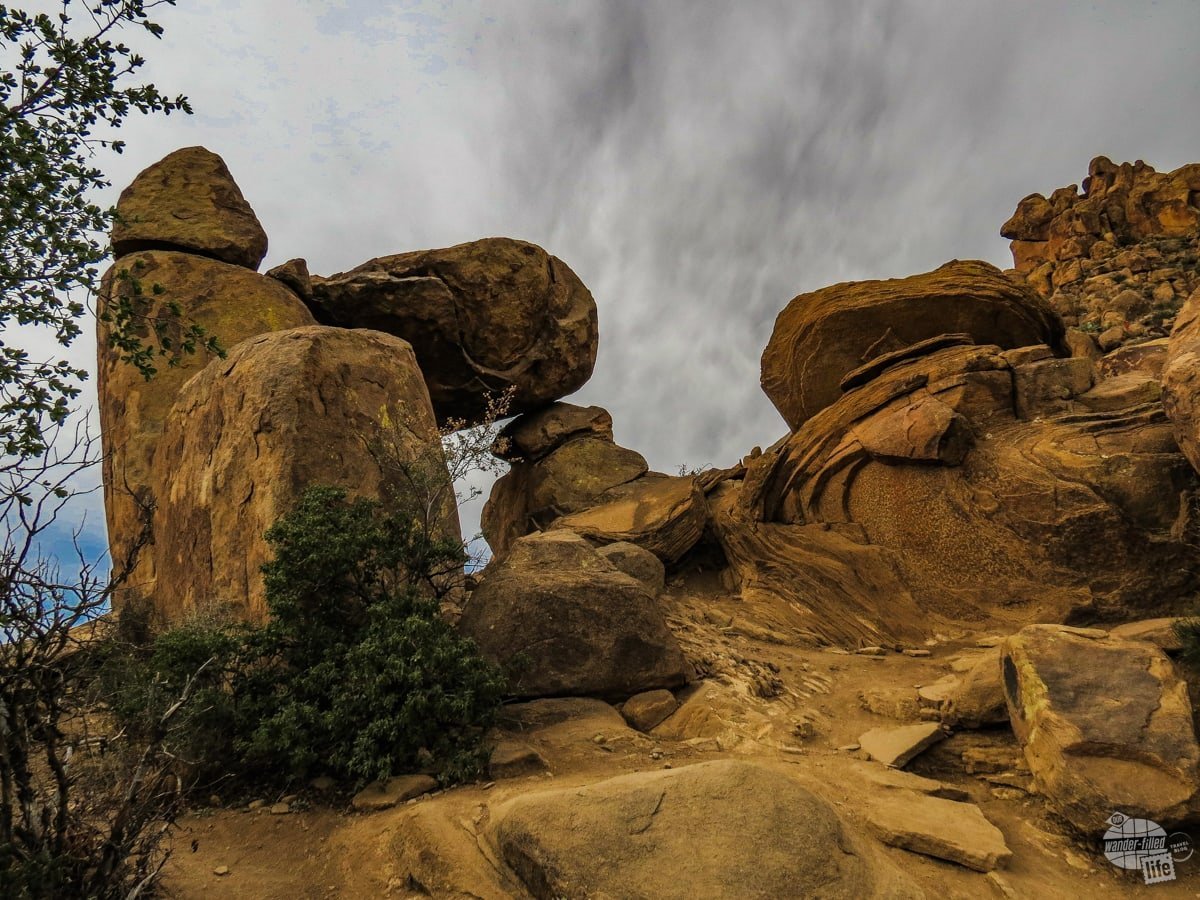
Hot Springs Road
Honestly, this was the scariest road in the park for me. It is not rough at all, but it does become quite narrow with a drop-off. Seriously, when you see the sign telling you not to take a dual-wheel or long vehicles, pay attention and pull off to park there. It is tight. It is so tight, we didn’t feel comfortable getting out for a picture.
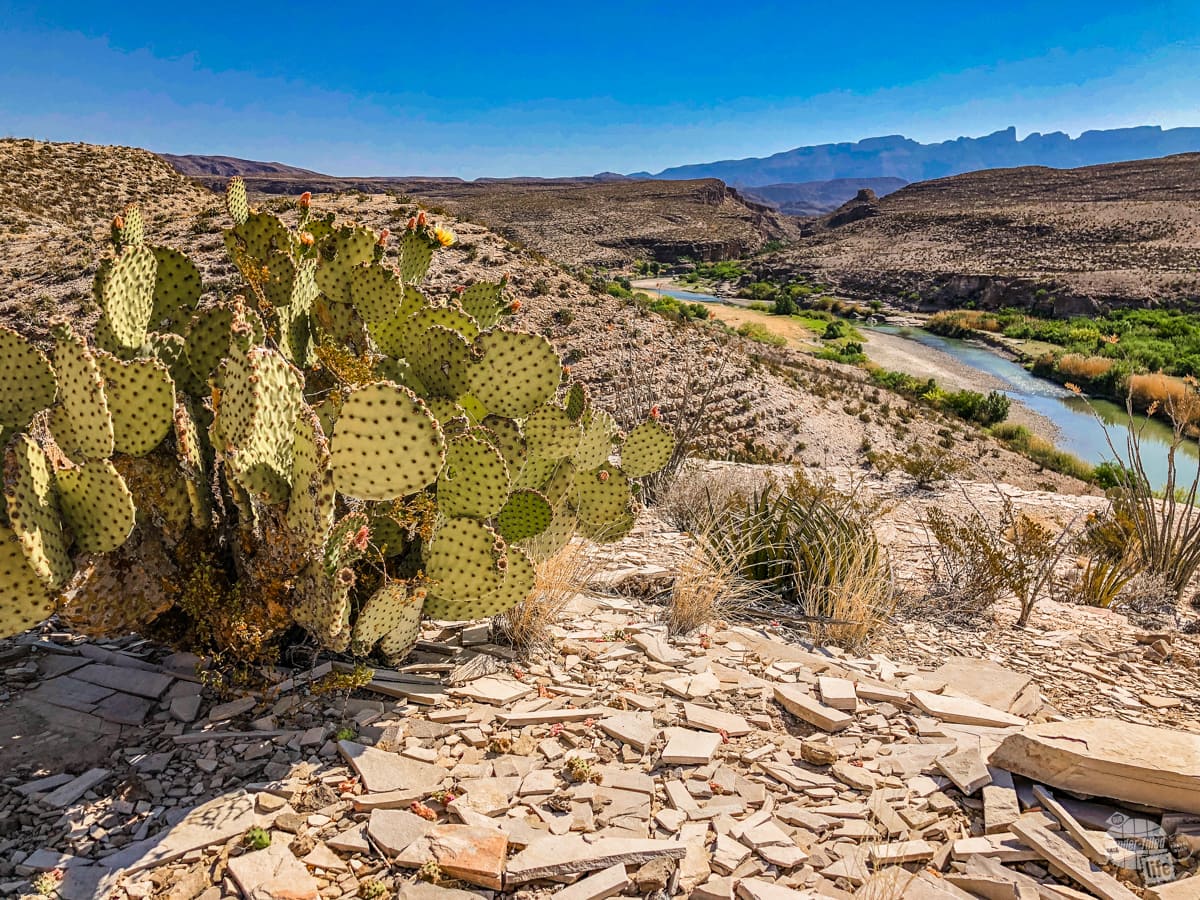
Still, seeing the remains of the old resort at the end of the road is worth the drive (or walk). In particular, the loop hike has some nice views of the river.
Old Maverick Road
This road runs south from the west entrance to the park to Santa Elena Canyon. This road is passable for most cars, but there are a couple of washes to pay attention to. If you are driving in a low-clearance vehicle, I would stop to ask a ranger about the conditions before driving the road.
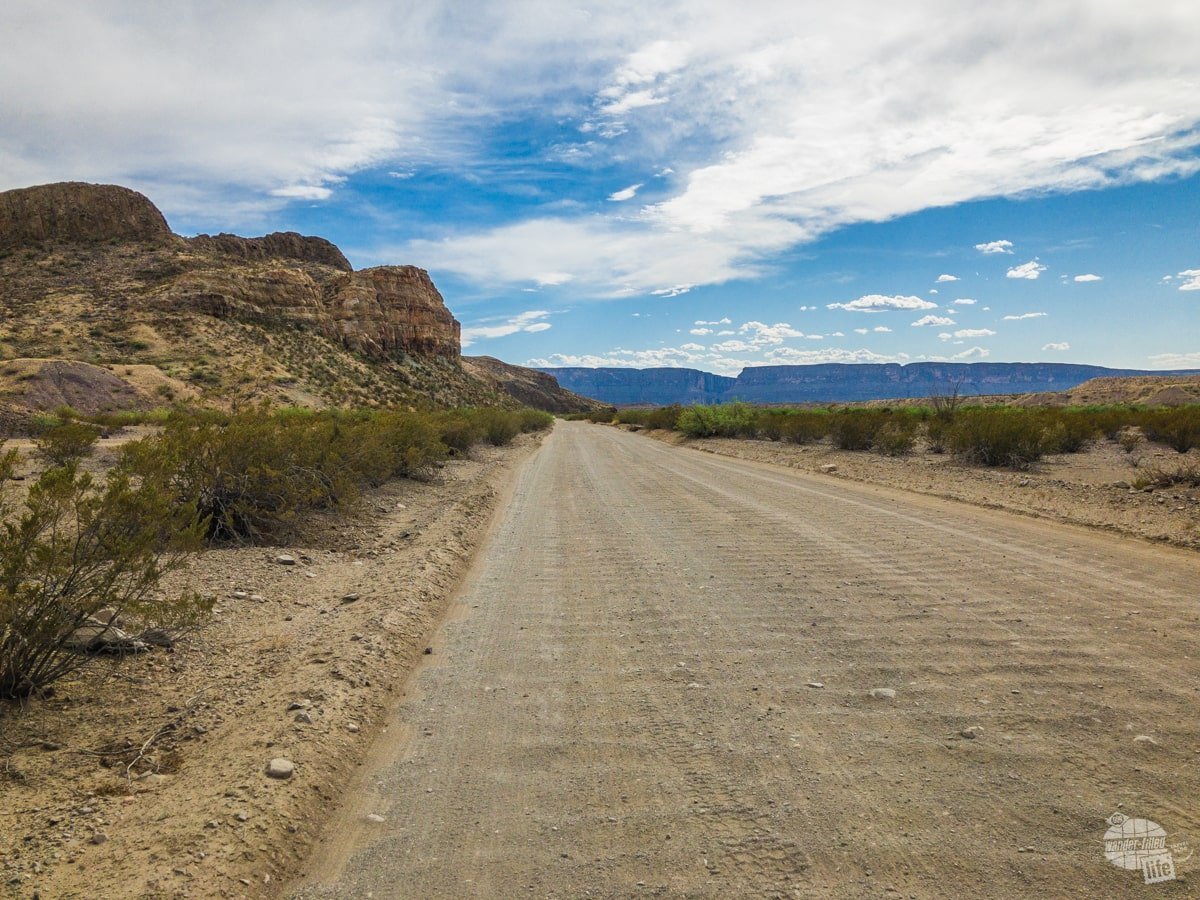
The best part of the Old Maverick Road, other than providing a “shortcut” to Santa Elena Canyon, is the history found along the road. There are several old ranches located along the road, including Luna’s Jacal.
Primitive Dirt Roads
Glen Springs Road
This road cuts east from the main road near Dugout Wells and heads south past Chillcoatl Mountain until it intersects with River Road.
This road requires a high-clearance, but I did not shift into four-wheel drive once. There were a couple of mildly rough sections, but nothing that most folks couldn’t negotiate by careful driving.
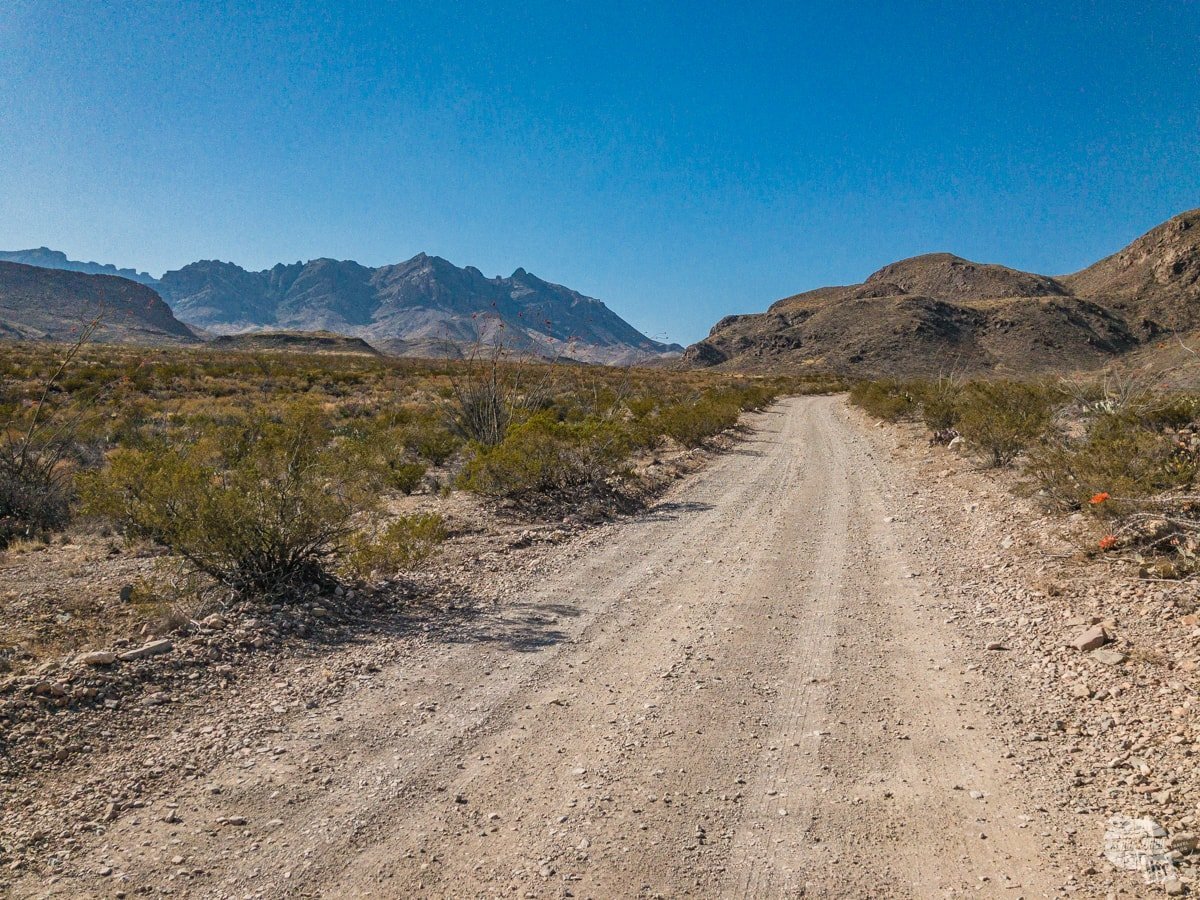
This road has several primitive campsites along it, as well as a few historic structures. There are two spur roads, Juniper Canyon and Pine Canyon which lead the more primitive campgrounds. We wanted to make it back for sunset, so we did not take either of these roads. The Park Service does say the Juniper Canyon Road can be a bit rocky and recommends four-wheel drive.
River Road
At 51 miles, this is the longest dirt road in the park. It traverses the southern end of the park past several historic sites. Quite honestly, it provides views of both the Chisos Mountains and the Rio Grande you simply won’t find elsewhere.
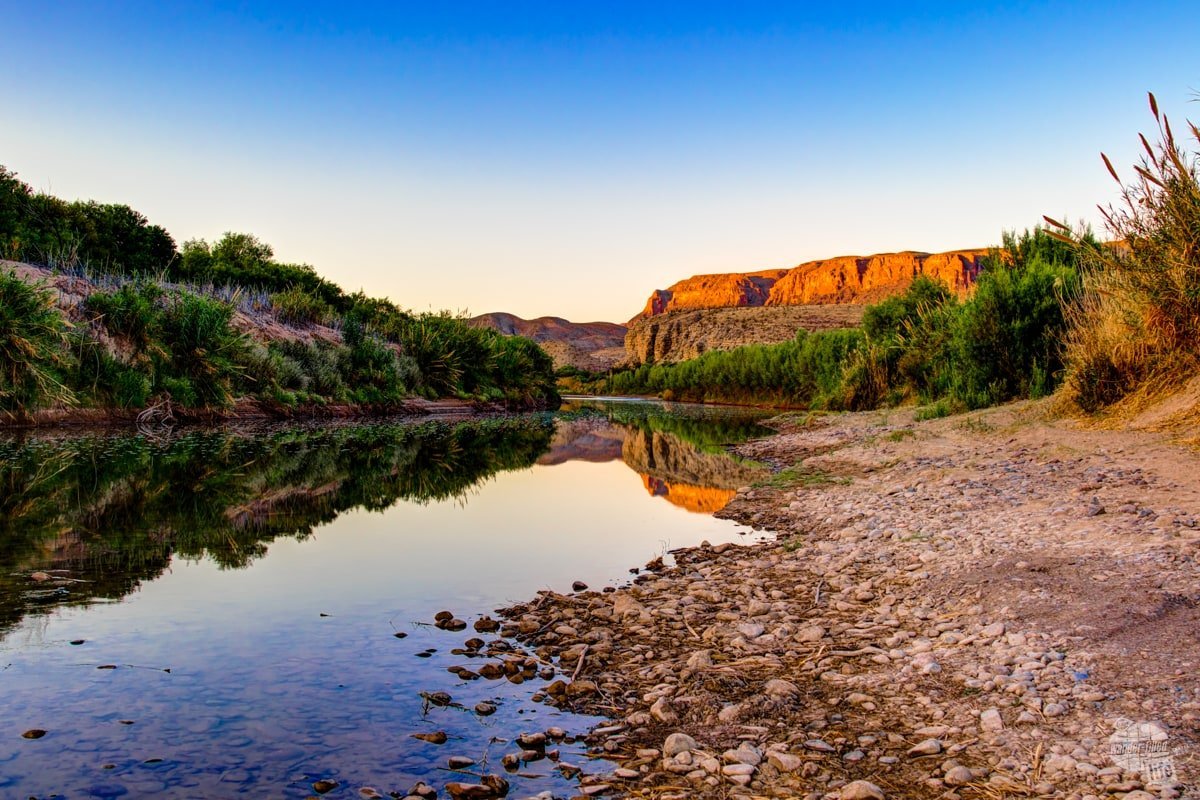
You must have a high-clearance vehicle to drive the road. As I said above, there were a couple of spots where I could feel the truck rubbing the rocks. I did shift into four-wheel drive high in a couple of spots. There are some long sandy sections which gave me a little concern. There are a couple of steep rocky sections with some divots which also concerned me a little.
I did engage four-wheel drive and the locking rear differential on one uphill. The truck powered through the section without difficulty and I shifted back to two-wheel drive.
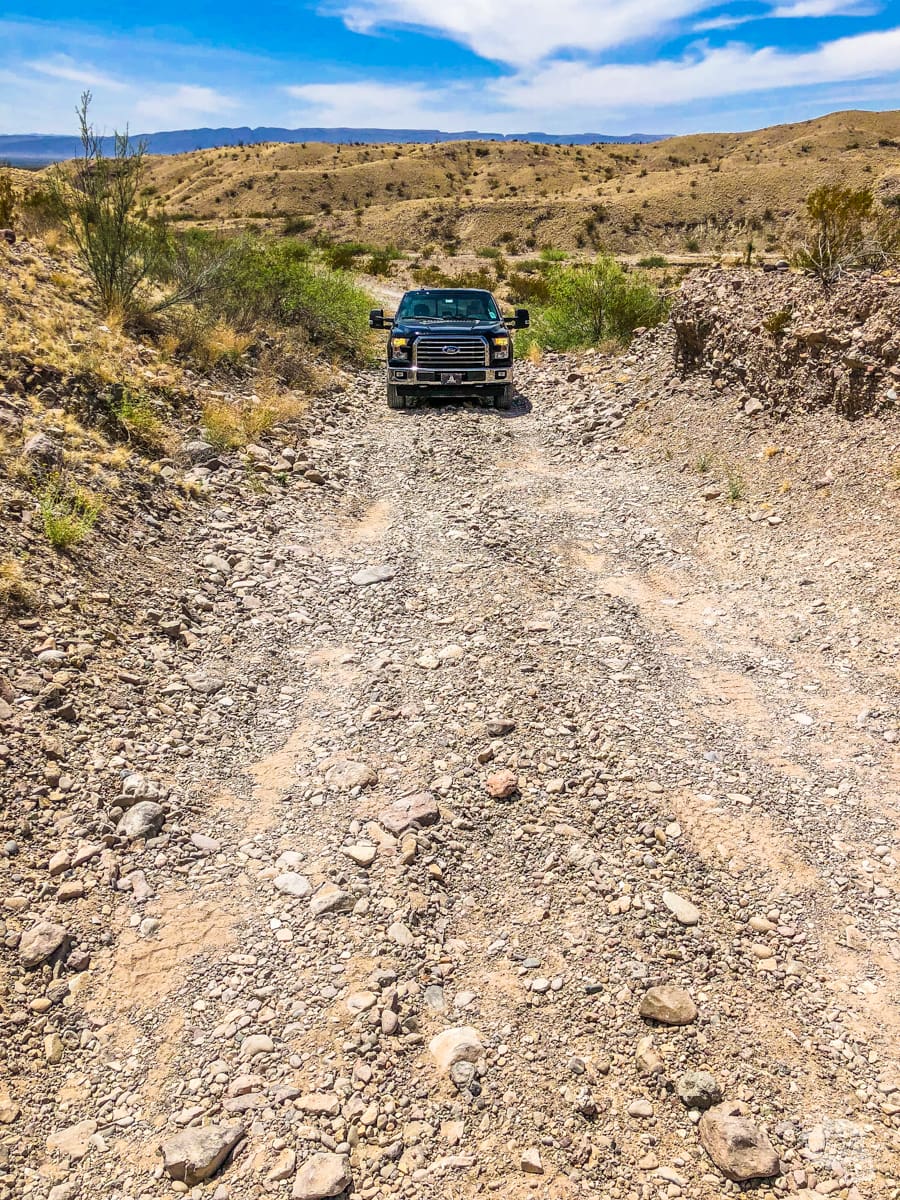
Driving the full of River Road will take several hours and it does require concentration the whole time. That said, the views are more than worth it.
We camped midway through at the Solis 2 campsite. While the book says the road to Solis can be a bit rough, we did not find any problems other than it being a bit sandy. Again, were it to rain, that would change the nature of the road altogether.
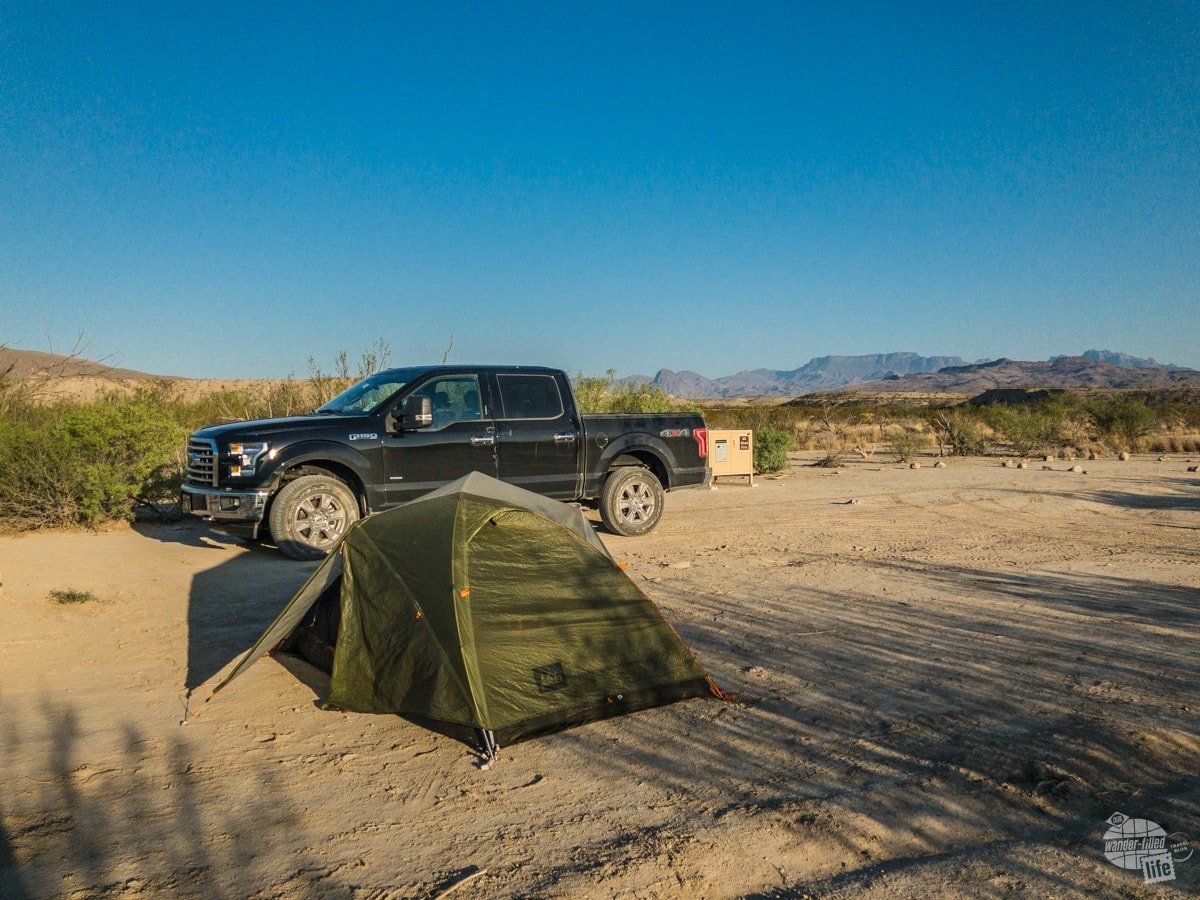
We loved hanging out by the river and camping with so much solitude. This ranks highly as one of the best experiences I have ever had in a national park.
Read more about where to stay in Big Bend National Park here.
Old Ore Road and Black Gap Road
We did not get a chance to take the Old Ore Road. I understand it is about as rough as River Road. Unfortunately, we picked up a screw in one of our tires and decided not to chance the road with a tire that was not holding air overnight.
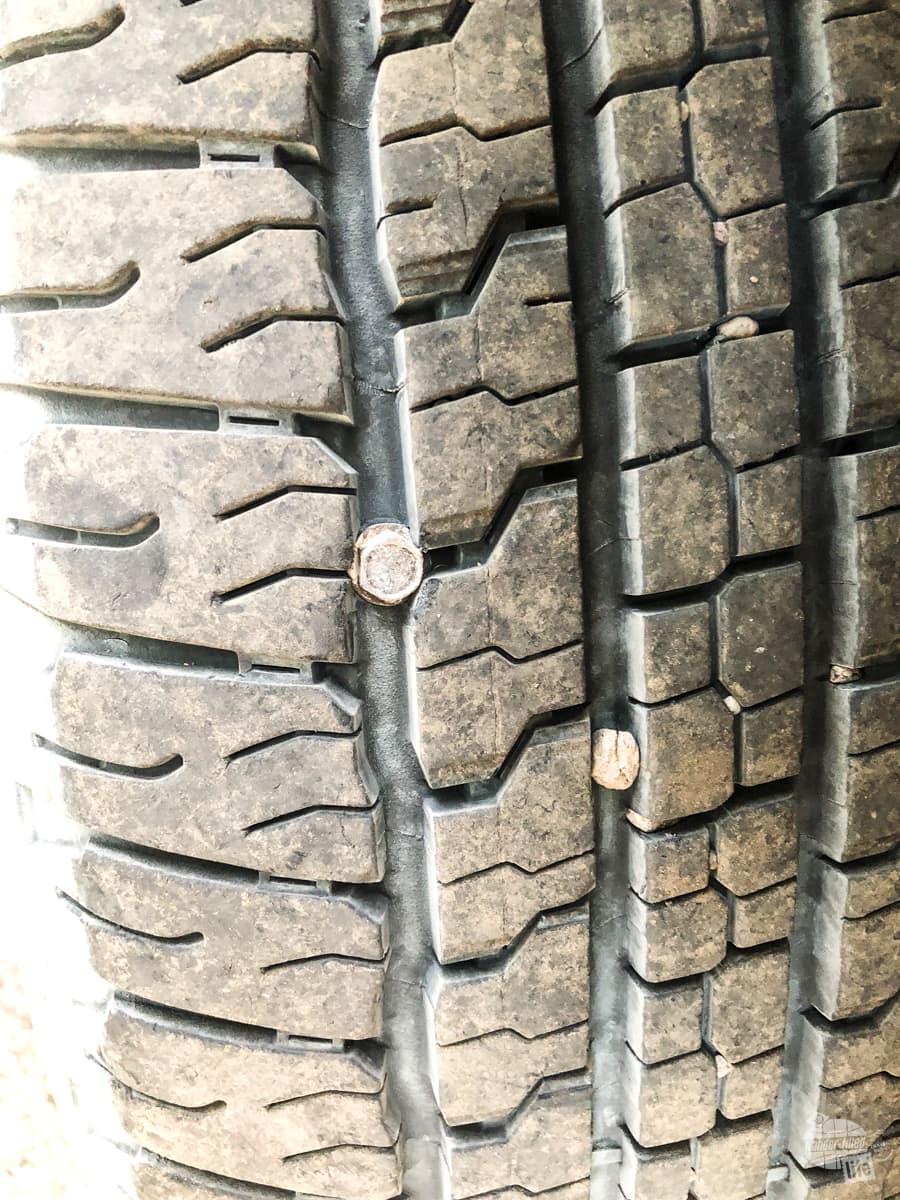
Black Gap Road, on the other hand, is not maintained at all and is quite a bit more challenging. We decided not to attempt that road at all with our relatively stock F-150. Back when I had a Jeep Wrangler, I would have been all about that road and its 24-inch step.
Final Thoughts
We got a lot of mixed messages about how difficult the roads were from both the rangers and the guidebook. I understand the conditions can change, especially following any amount of rain. And we probably had some really nice road conditions (very dry). Still, the descriptions of how difficult the roads are and the vehicle requirements can be a bit over-the-top.
My experience: if you have a vehicle with four-wheel drive and good ground clearance, you should be able to handle all the roads (other than Black Gap) as long as you are careful. If you are driving a two-wheel-drive vehicle, stick to the improved dirt roads.
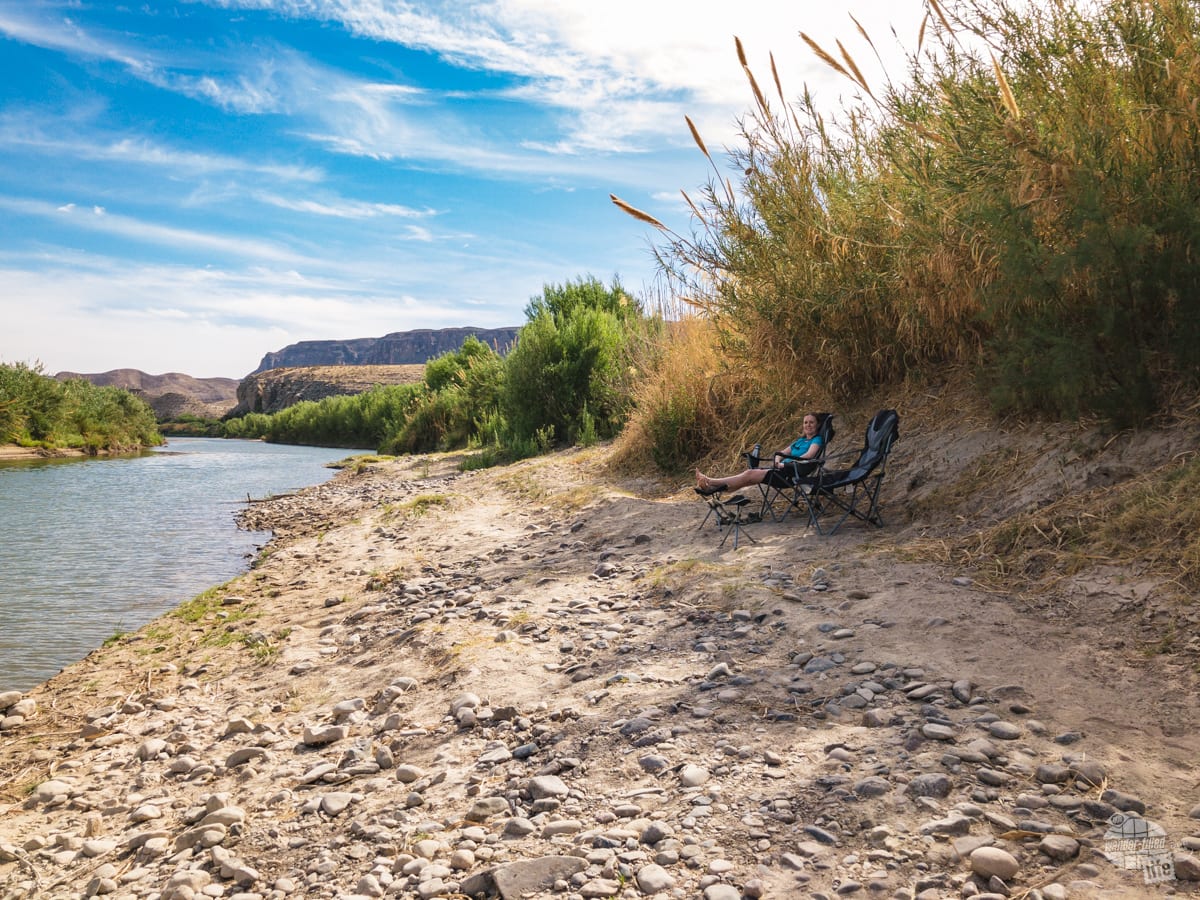
Regardless, getting out into the backcountry of Big Bend National Park was one of my favorite experiences in a national park, period. I can’t wait to do it again. For more on our trip to Big Bend, check out my “Song of the Open Road” or Bonnie’s four-day itinerary.
Travel Resources
What do you use to find a flight?
We use Skyscanner to find deals on flights. Skyscanner has a great interface and compares tons of airlines for the best pricing and routing. That said, it does not always have every airline and some airlines will have better deals on their website. Still, Skyscanner is a great place to start.
Click here to search for a flight.
What do you use to find a hotel?
We typically stay at Hilton properties, so we use the Hilton website. You can find good Hilton Honors discounts or AAA discounts for a hotel there. We make great use of our free night certificates from our Hilton Honors American Express.
Click here to book a Hilton property.
If there are no Hilton properties available, we use TripAdvisor to read reviews and book the hotel. We find we can get the best price that way.
Click here to search for a hotel.
We recently partnered with Stay22 to add interactive maps to each of our destination posts. This will allow you to see a plethora of hotels and vacation rentals all in one responsive map of the area.
What if I need more space than I can get at a hotel?
We use Vrbo for the times when we have rented a cabin for a weekend getaway, like this cabin in Townsend, TN, or needed to rent a house for a large family vacation. We had a great experience with them in terms of refunding deposits when COVID hit and will continue to use them.
Click here to search for a vacation rental.
Who do you use for rental cars?
As a general rule, we book with Hertz for rental cars. We have had nothing but good experiences with them. Plus, we really like unlimited mileage and not worrying about crossing state lines. We have even rented from Hertz overseas in both Slovenia and Croatia.
Click here to book a rental car.
How about booking a cruise?
We have found some amazing prices for booking a cruise through Cruise Direct. We have saved a lot of money on our cruises compared to what we found elsewhere, making a last-minute Bahamas cruise even cheaper.
Click here to book a cruise.
What if I want to rent an RV?
We highly recommend Outdoorsy for RV rentals. We rented a camper van for a week to visit Rocky Mountain National Park for the elk rut and Custer State Park for the Buffalo Round-Up and had a blast. The program was easy to use and we really enjoyed the freedom of having a camper van for that trip.
Click here to rent an RV.
What do you use for booking tours?
We don’t often book tours. Typically, we like to do stuff on our own. That said, there are some experiences you can’t have any other way. So, when we do want to book a tour, we always check Viator first.
Click here to book a tour.
Do you use anything to get discounts on the road?
We make extensive use of both Good Sam and AAA on the road. Good Sam is normally regarded as a discount card for RVers at campgrounds and Camping World but anyone can use the 5 cents off a gallon at the pump at both Pilot and Flying J.
Click here to get a Good Sam membership.
We have had AAA as long as we have been married and it has more than paid for itself in discounts at hotels, aside from the peace of mind of having roadside assistance. Add in paper maps and the ability to get an international driver’s license and it is more than worth it for any traveler out there.
Click here to get a AAA membership.
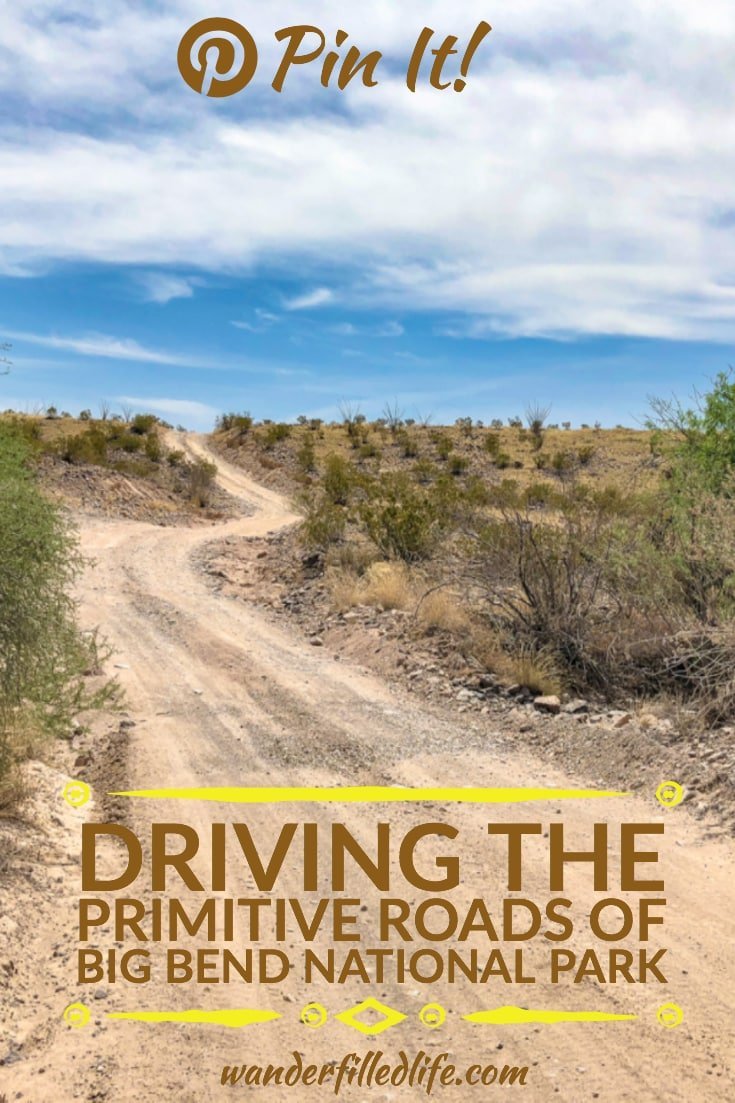

Glad you got to experience that part of the world. It is a different and unique lanscape and mindset there. If you ever have the opportunity to visit again, look into Chinati Hot Springs, the Pinto Canyon Ranch Road, and Big Bend Ranch State Park.
Thanks so much! We are looking forward to going back and these are great suggestions.
Great play by play: I almost felt like I was there at times. Fun read. Thanks.
Thank you so much!
This article is priceless. Thank you!!
Thanks so much! I hope you can get out off the beaten path like we did!